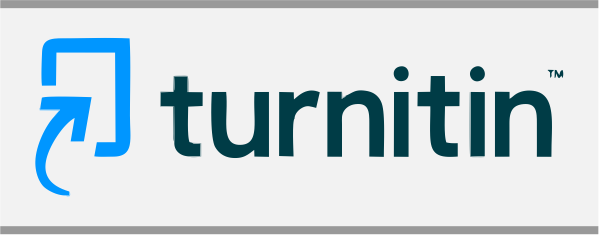INSTACLASS INCORPORATING INSTAGRAM AS A MOBILE LEARNING TOOL IN LANGUAGE CLASSROOM
(1) State Polytechnic of Malang
(2) State Polytechnic of Malang
(3) State Polytechnic of Malang
(*) Corresponding Author
Abstract
Keywords
Full Text:
PDFReferences
Al-Ali, S. (2014). Embracing the selfie craze: Exploring the possible use of Instagram as a language mLearning tool. Issues and Trends in Educational Technology, 2(2).
Amer, M. (2014). A study of learners’ usage of a mobile learning application for learning idioms and collocations. CALICO Journal, 31 (3) DOI: 10.1558/cj.v31i3.24711.
Bell, M. A. (2013). Picture this! Using Instagram with students. Internet@Schools, 20(4), pp. 23-25.
Bergstrom, T. & Backman, L. (2013). Marketing and PR in Social Media: How the unitilization of Instagram builds and maintains customer relationship. Media and Communication.
Bowman, N. D., & Akcaoglu, M. (2014). “I see smart people!â€: Using Facebook to Supplement Cognitive and Affective Learning in the University Mass Lecture. The Internet and Higher Education, 23, pp. 1-8.
Bransford, J.D., Brown, A.L. and Cocking, R.R., 1999. How people learn: Brain, mind, experience, and school. National Academy Press.
Bruner, J. (1990). Acts of meaning. Cambridge, MA: Harvard University Press.
Falout, J., Maruyama, M. (2004) ‘A comparative study of proficiency and learner demotivation’, The Language Teacher, 28, pp.3–9.
Fewkes, A. M., & McCabe, M. (2012). Facebook: Learning tool or distraction? Journal of Digital Learning in Teacher Education, 28(3), 92-98.
Figueiredo AD, Afonso AP. Context and learning: A philosophical approach. In Figueiredo AD, Afonso AP, editors. Managing learning in virtual settings: The role of context. Hershey, PA: Idea Group; 2005. pp. 1–22.
Handayani, A. D., Cahyono, B. Y., & Widiati, U. Original Paper The Use of Instagram in the Teaching of EFL Writing: Effect on Writing Ability and Students’ Perceptions.
Husniyah, A. (2018). Blended Learning in EFL Classrooms with Slow Internet: Insight from Teachers and Students. In English Across Cultures. Paper presented at the Proceedings of The Fourth International Conference on English Across Cultures, Bali, Indonesia (pp.68-79). Bali: Undiksha Press.
Krüger-Ross, M., Waters, R. D., & Farewell, T. M. (2012). Everyone’s all a-twitter about twitter. In K. K. Seo (Ed), Using social media effectively in the classroom (pp. 117- 131). New York, NY: Routledge.
Linn MC. Learning and instruction in science education: Taking advantage of technology. In Tobin D., & Frazer B., editors. International handbook of science education. Dordrecht, The Netherlands: Kluwer; 1998.
McCarthy, J. (2010). Blended learning environments: Using social networking sites to enhance the first year experience. Australasian Journal of Educational Technology, 26(6), 729-740.
Mondahl, M., & Razmerita, L. (2014). Social Media, Collaboration and Social Learning--A Case-Study of Foreign Language Learning. Electronic Journal of E-learning, 12(4), 339-352.
Murray, G. (2014). Autonomy in language learning as a social construct. In Social dimensions of autonomy in language learning (pp. 233-249). Palgrave Macmillan, London.
Oxford, R. L. (1997). Cooperative learning, collaborative learning, and interaction: Three communicative strands in the language classroom. The Modern Language Journal, 81(4), 443-456.
Parker, J., Maor, D. and Herrington, J., 2013. Authentic online learning: Aligning learner needs, pedagogy and technology. Issues in Educational Research, 23(2), pp.227-241.
Pelgrum W. Obstacles to the integration of ICT in education: results from a worldwide educational assessment. Computers & Education. 2001; 37(2): 163–78.
Richards, J. C. (2015). The Changing Face of Language Learning: Learning Beyond the Classroom. RELC Journal, 46.1, 5–22.
Salomon, D. (2013). Moving on from Facebook: Using Instagram to connect with undergraduates and engage in teaching and learning. College & Research Libraries News, 74(8), 408-412.
Shetzer, H. and Warschauer, M., 2000. An electronic literacy approach to network-based language teaching. Network-based language teaching: Concepts and practice, pp.171-185.
Stockwell, G. & Liu, Y. C. (2015). Engaging in mobile phone-based activities for learning vocabulary: An investigation in Japan and Taiwan. CALICO Journal, 32(2). DOI: 10.1558/cj.v32i2.25000.
Tekulve, N., & Kelly, K. (2013). Worth 1,000 words: Using Instagram to engage library users.
Van Lier, L., 2000. 11 From input to affordance: Social-interactive learning from an ecological perspective. Sociocultural theory and second language learning, p.245.
Warren, S. J., & Wakefield, J. S. (2012). Learning and teaching as communicative actions: Social media as educational tool. In K. K. Seo (Ed), Using social media effectively in the classroom (pp. 98- 113). New York, NY: Routledge.
DOI: 10.24235/eltecho.v4i2.5365
Article Metrics
Abstract view : 183 timesPDF - 40 times
Refbacks
- There are currently no refbacks.
Â
This Journal is indexed by:
Â

This work is licensed under a Creative Commons Attribution 4.0 International License.










